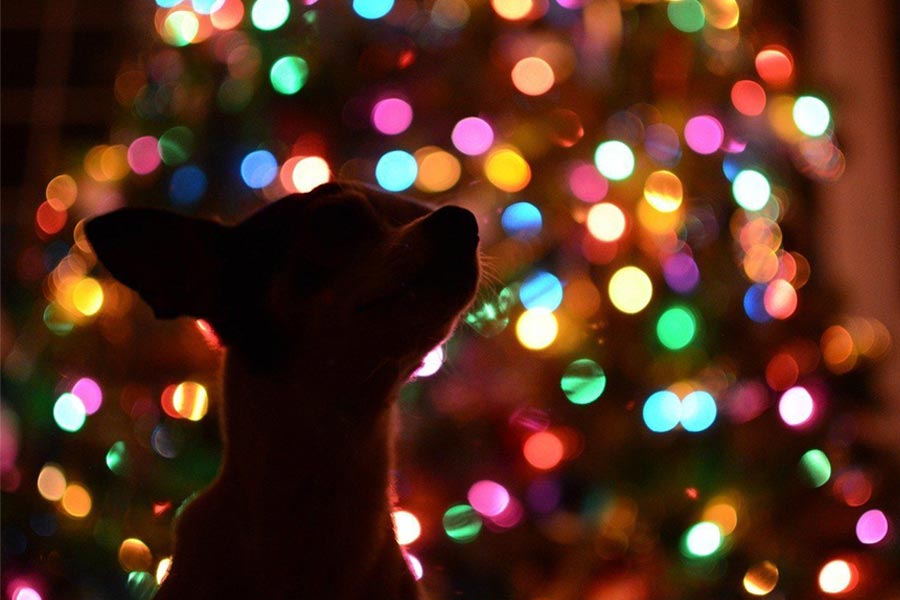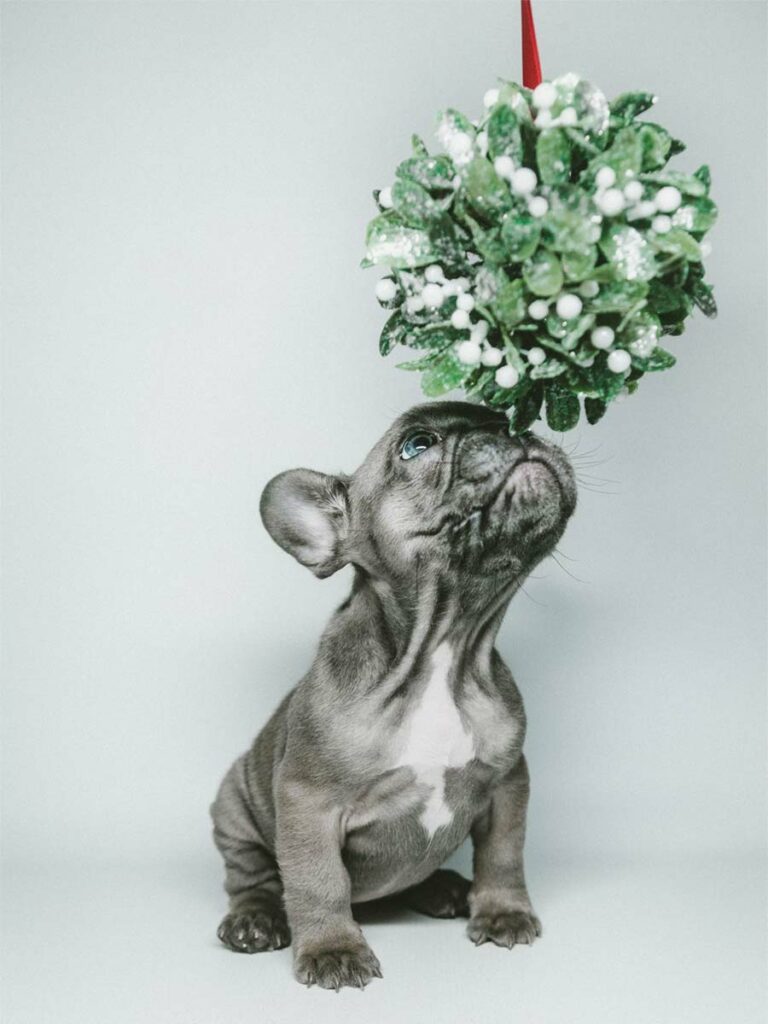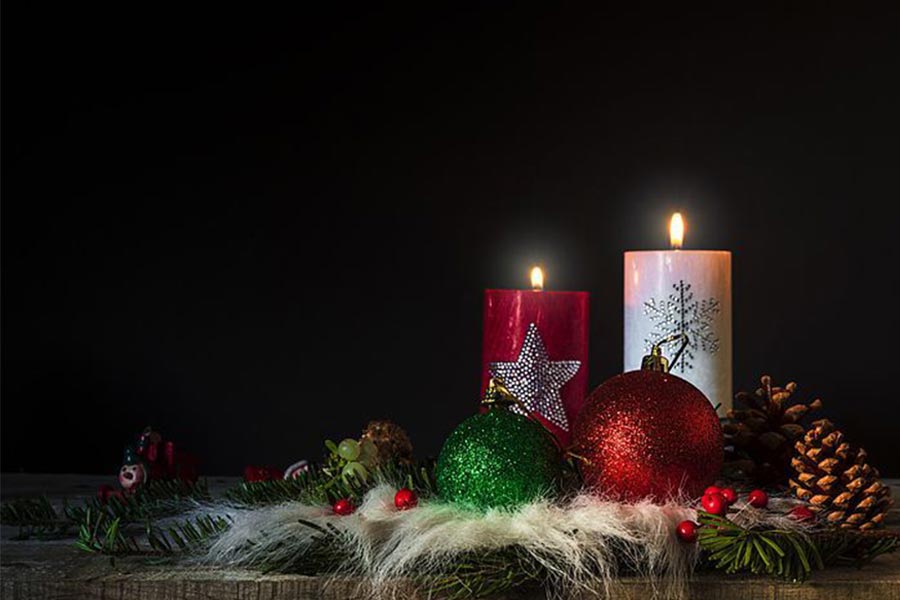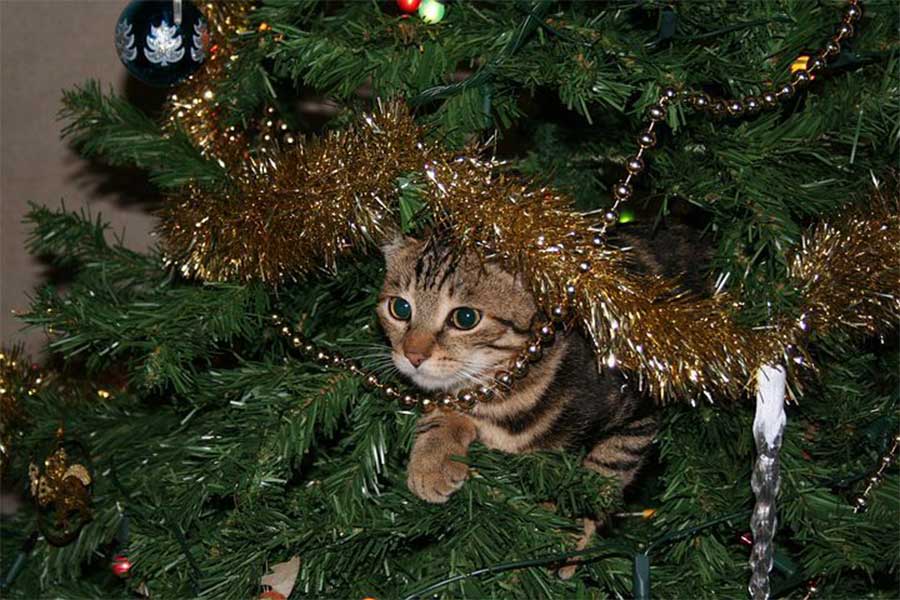Holiday Pet Safety

Christmas Pet Safety
The holiday season is fast approaching and with it comes all the joys and challenges of holiday entertaining. We often become so focused on family and friends during this time that we forget about how our pets may respond to the seasonal changes around them. There are multiple pet hazards that are specifically linked to holiday traditions. It’s important to discuss these holiday pet safety and health hazards, and how you can help keep your season less stressful by avoiding an untimely trip to a veterinarian near you over the holidays.
Dangerous Holiday Foods for Pets
So many of our holiday traditions revolve around food. Elaborate family dinners, homemade baking, and gifts of food are all possible hazards for our pets. These are some of the foods that can be dangerous to pets:
Chocolate
Chocolate is a popular Christmas treat, but unfortunately it is toxic to both cats and dogs—though we don’t often see cats that have ingested chocolate. Dogs are far more likely to eat chocolate and experience toxic symptoms. Theobromine and caffeine are the components of chocolate that cause toxic effects. These are called methyl-xanthines. At low doses you can see vomiting and diarrhea, but with higher doses you can get cardiac arrhythmias and seizures. Toxic effects are dose-dependent and there are individual variations in how pets react. Dark chocolate has higher levels of methyl-xanthines than milk chocolate and white chocolate has negligible amounts. Dry cocoa powder and bakers chocolate have the highest levels of methyl-xanthines, so ingestion of baked goods containing these ingredients is especially concerning. If you have chocolate around your house over the holiday, please keep it well out of the reach of inquisitive pets. If you suspect that a wrapped gift contains chocolate, do not place it under the tree as dogs will often sniff them out and ingest them. If you know or suspect that your pet has ingested chocolate, you shouldcontact your vet right away.

Home Baked Goods and Festive Meals
There are specific ingredients that are toxic to dogs and cats that are common in holiday foods. Onions and garlic contain organosulfur compounds, which are toxic, and cats appear to be more sensitive. They can cause stomach upset initially and do damage to blood cells in higher doses. Grapes and raisins, which are found in traditional Christmas cakes, are also toxic to dogs. The toxic ingredient in grapes is not known, and individual sensitivity is highly variable. If ingested in toxic doses, grapes/raisins can cause kidney failure. Fatty foods are also dangerous if ingested in large amounts. If your pet happens to get into holiday foods that are high in fat content they can suffer stomach upset or progress to a more serious condition called pancreatitis. To prevent exposure, make sure to keep pets away from your holiday buffet and put leftovers away as soon as possible. Compost bins and trash bins containing food scraps and bones should also be emptied right away. This is especially important if you have a pet that is known to be food driven and will take advantage of a situation where food is left unattended.
Artificial Sweeteners
Xylitol, an artificial sweetener used in gum and sugar free candies is toxic to dogs. It can cause liver failure and changes in blood sugar that can be life threatening. It is best to keep foods sweetened with xylitol out of the house or well out of reach of your dog.
Hazardous Holiday Decorations for Pets
Cats and dogs are inquisitive animals and the holiday season exposes them to many interesting objects and experiences. This is especially evident if you have a new puppy or kitten that have not previously been exposed to holiday decorations and traditions.
Plants
Holiday decor often includes plants like poinsettias, holly, and mistletoe. All of these plants are toxic to pets if ingested. Poinsettias are mildly toxic and can cause stomach upset and vomiting. Holly is also mildly toxic causing stomach upset, vomiting, and depression. Mistletoe can cause vomiting, diarrhea, changes in heart rate and sometimes low blood pressure. It is best to keep these plants out of your house or out of reach of your pets. Holiday bouquets may also contain lilies. Lilies are toxic to cats and cause kidney failure. If you receive a holiday bouquet with lilies we recommend you remove them from the bouquet and dispose of them.

Candles and Liquid Potpourri
Holiday scented candles and potpourri pose a risk to pets in a couple of different ways. Lit candles can cause burns when pets get too close or a fire if they are knocked over. Liquid potpourri causes chemical burns if ingested and toxic effects like breathing problems and tremors. We recommend the use of battery operated candles for your holiday decor and if possible avoid the use of liquid potpourri. A pot of simmering mulled apple cider or wine will give you that same traditional holiday scent and you can enjoy drinking it as well.

Christmas Trees
There are so many things on a Christmas tree that are hard to ignore if you are a curious pet. Cats are especially at risk of running into trouble by investigating the tree. Cats are proficient climbers and the Christmas tree is often an indoor cat’s first exposure to a tree. It is important to create a cat-safe Christmas tree by making sure your tree is well secured to prevent it from falling on your pet. Tethering it to the wall and having a very stable tree stand are essential. Tinsel, garland and ribbons are inviting play toys for pets and can be ingested. If your pet eats a string-like object it can cause a linear foreign body, which can require surgery to remove. We recommend that pet owners do not use tinsel, garland, string or ribbon in houses with pets, especially cats. There are modified metal tinsel ornaments that can replace hanging tinsel and bows are a good alternative to strings and ribbon. Dogs can also mistake ornaments on the tree for toys and can chew/ingest them causing trauma from the broken ornament or a foreign body in the digestive tract. To avoid problems, keep ornaments up high out of reach. Electric lights can cause electrical shocks from chewing on cords or the lights themselves. Always remember to unplug your lights when you are away from the home and your pets are not being supervised.

To summarize, a pet-friendly Christmas tree should include:
- A tree that is well secured including tethering if needed
- Use of an extra stable tree stand
- Avoid use of any tinsel, garland, string and ribbons
- Ornaments that are kept higher up the tree
- Electric lights that are always unplugged when the tree is not supervised
Making the holiday season safe for your pet should be easy. It just takes a few moderations to holiday decor and remembering to be vigilant around food to ensure pet safety around the holidays. Never leave your pet unsupervised in situations where you know they will be tempted to get into things that may be hazardous to their health. If you are at all concerned that they are showing signs of toxicity or there is evidence that they got into something they shouldn’t have, pleasecall your veterinarianright away. Early intervention is important for successful treatment.
Hopefully you will have an uneventful holiday season with your family, friends and pets. Enjoy!
– Dr. Lia Morley